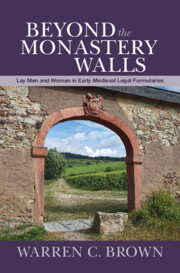3 - Language, Anachronism, and the Laity
from Part I - The Gate
Published online by Cambridge University Press: 09 December 2022
Summary
This chapter tackles two principal problems with connecting the formulas to a real world: their often difficult or incorrect (by classical standards) Latin, and the late Roman and early Merovingian legal language that has led to them being labeled as antiquarian fossils. The chapter argues that the idiosyncratic Latin of the formulas in fact communicated essential content in regions where the spoken languages were evolving into Romance, as well as (with the help of glosses and occasional vernacular words) where they were Germanic. The obsolete (or obsolescent) legal language reflects a legal culture in the eighth and ninth centuries in which – especially in western areas with strong Roman roots – references to Roman law and procedure still meant something. Roman legal language gave some documents an imprimatur of authority. Descriptions of antique procedures bore a recognizable relationship (though not necessarily an exact correspondence) to how those transactions were actually carried out. In short, the legal and formulaic inheritance of Rome in the western regions of the Carolingian world contributed to a normative framework that lent authority and legitimacy both to documents and to the legal procedures that they recorded.
Keywords
- Type
- Chapter
- Information
- Beyond the Monastery WallsLay Men and Women in Early Medieval Legal Formularies, pp. 80 - 118Publisher: Cambridge University PressPrint publication year: 2022

